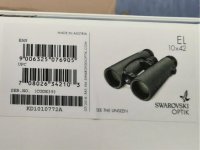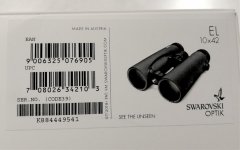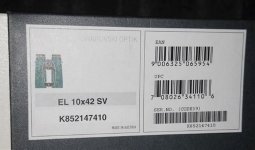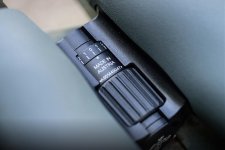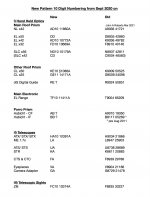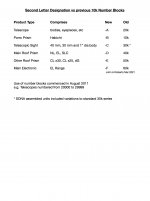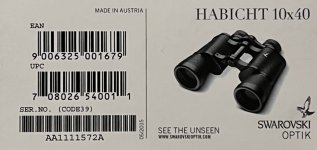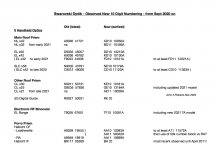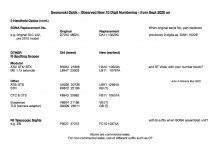Time for a 12 month update . . .
As I previously indicated, the new pattern of 10 digit serial numbering introduced in September 2020, consists of 5 components
in the form of
PTyy nnnnnL
Where:
P = product/ product line e.g. A for NL x42, K for the EL x42
T = type of product e.g. D for the main roof prism binoculars, so AD for the NL x42 and KD for the EL x42
yy = year of production, add 2010
nnnnn = consecutive number, starting from 10,000
L = location of manufacture, assembly or numbered component replacement e.g. A for Absam/ Austria
I’ve since collected more information, and while the two tables make clear most of the details and relationships between the numbering components,
a couple of clarifications are in order:
i) Suffix
As can be seen:
• A indicates units manufactured and assembled at Absam, and;
• C indicates those where during repairs, SONA (Swarovski Optik North America) has replaced the part that had the original serial number.
So likely:
• B will indicate units made at Absam but assembled by SONA (at present some telescopic sights), and;
• D will indicate those for non-commercial sales, where different warranty conditions would apply
e.g. see the 2021 catalogue for Government Agencies at:
https://ezone.idexuae.ae/storage/brochures/oFywNQu80BWsaHlkEx6QIhpxXa1jETE1ufAHTomB.pdf
ii) Number Blocks
All of the number sequences that I've observed commenced from 10k, but since then there appears to have been at least one change
i.e. with the Habicht CF Porro prism binoculars, the leatherette production seems to have commenced a new 50k sequence,
while the RA units continue with the original 10k one.
In a similar way with the previous numbering system, the different models of Z3 and Z5 sights assembled by SONA used different number blocks,
and that practice may be continuing.
And the ultra expensive ST Vista telescope (listed at € 13k/ US $14.3k) may also have it’s own sequence.
The Vista is a fixed body 30x95 scope using X series optics in an ultra durable housing with an integral gimbal head,
see both:
ST Vista 30x95 Spotting Scope (including Jan's comments on the optical quality)
and the Swarovski site:
ST Vista: outdoor spotting scope
John






